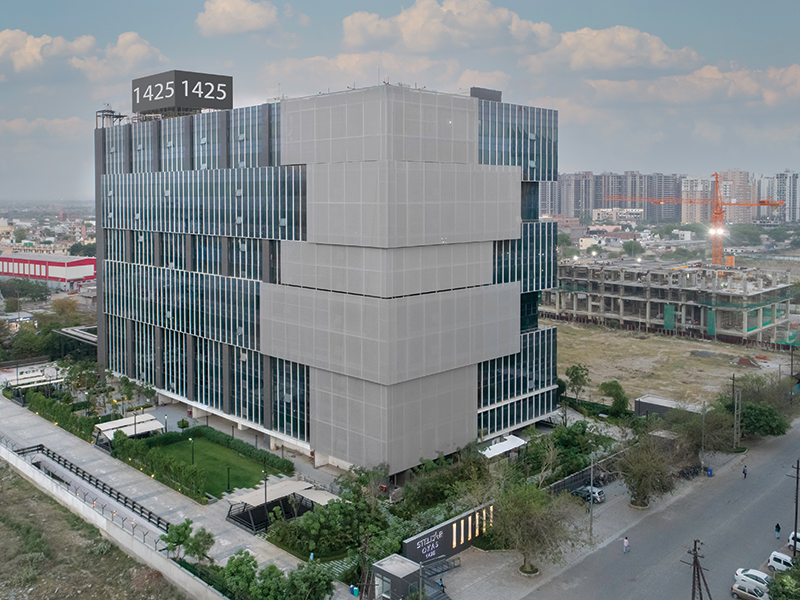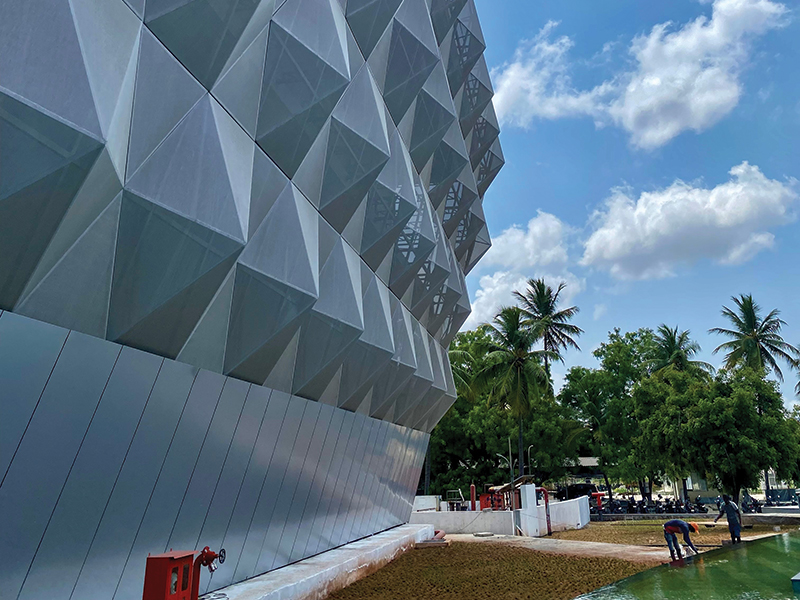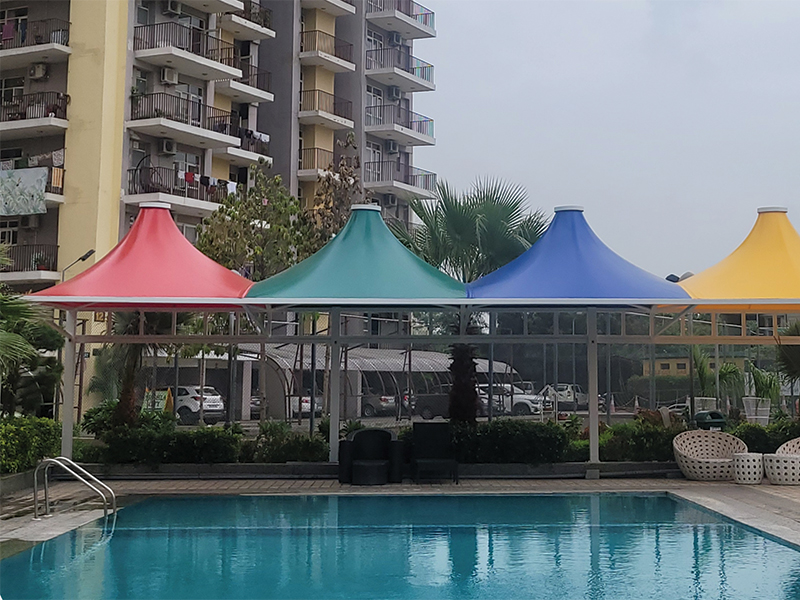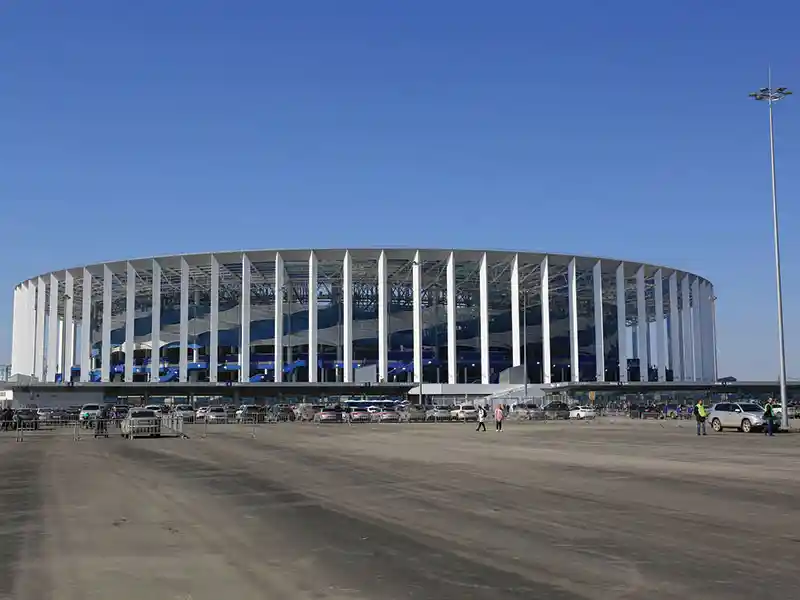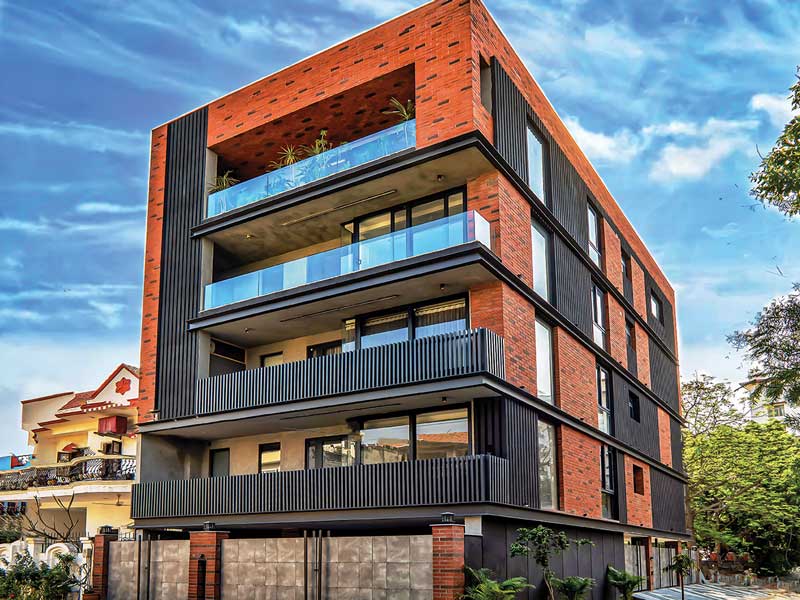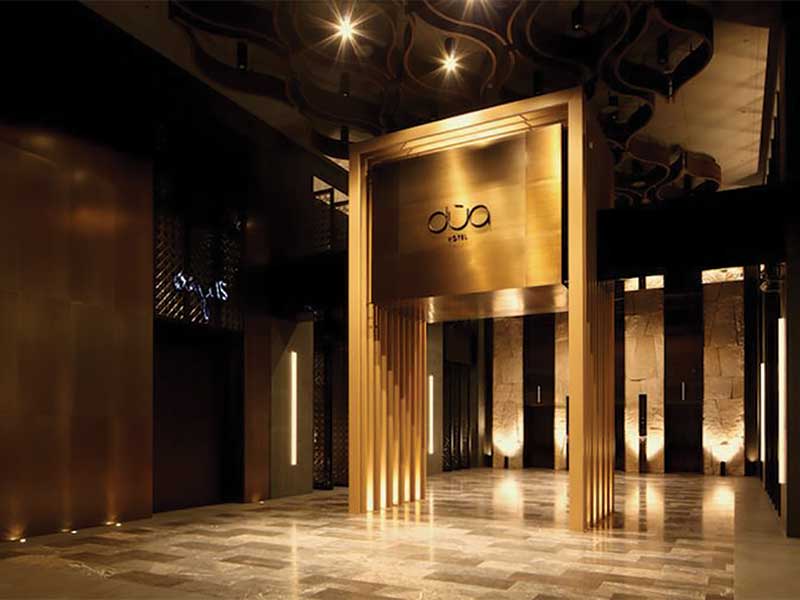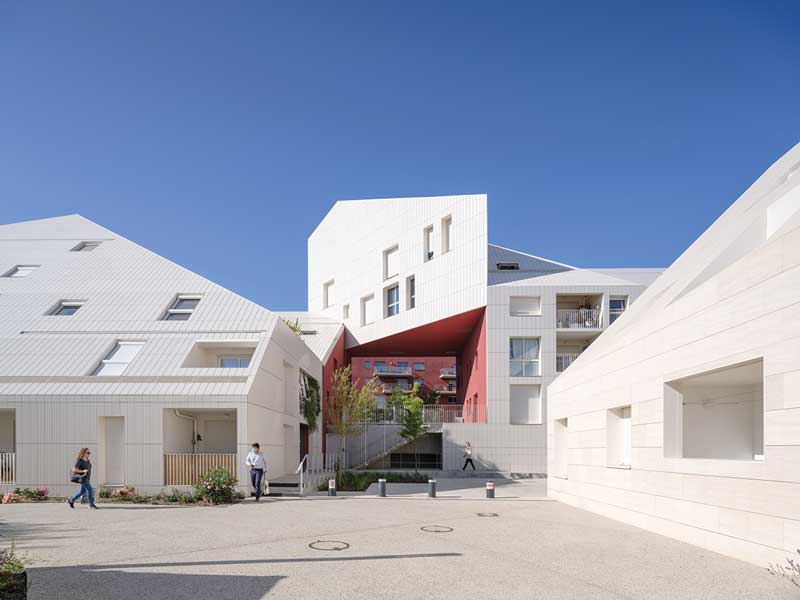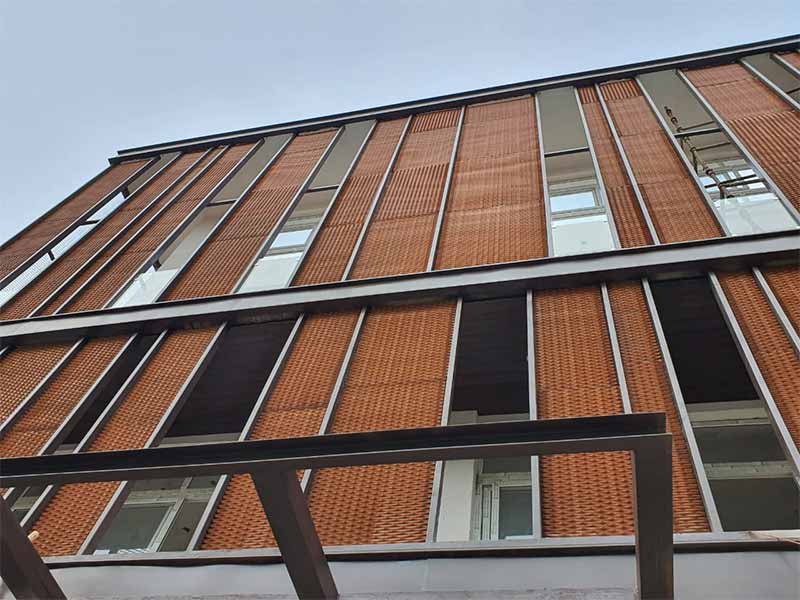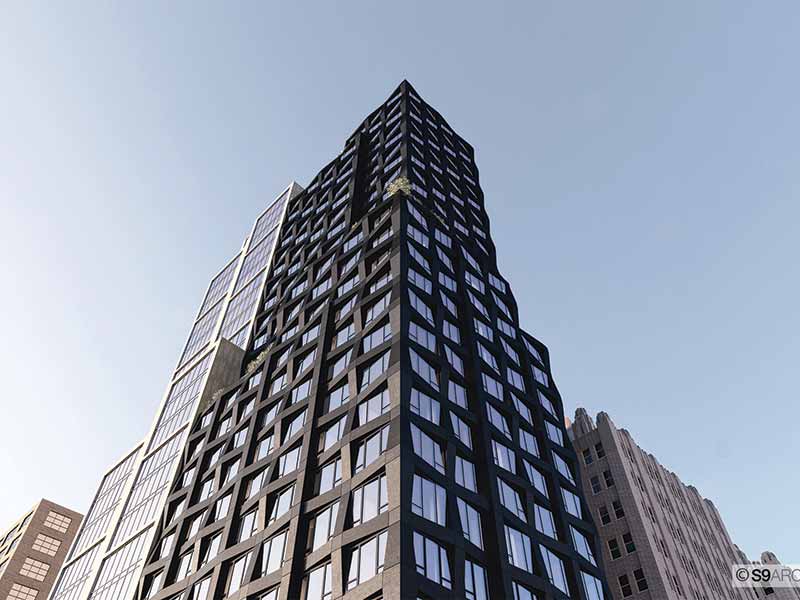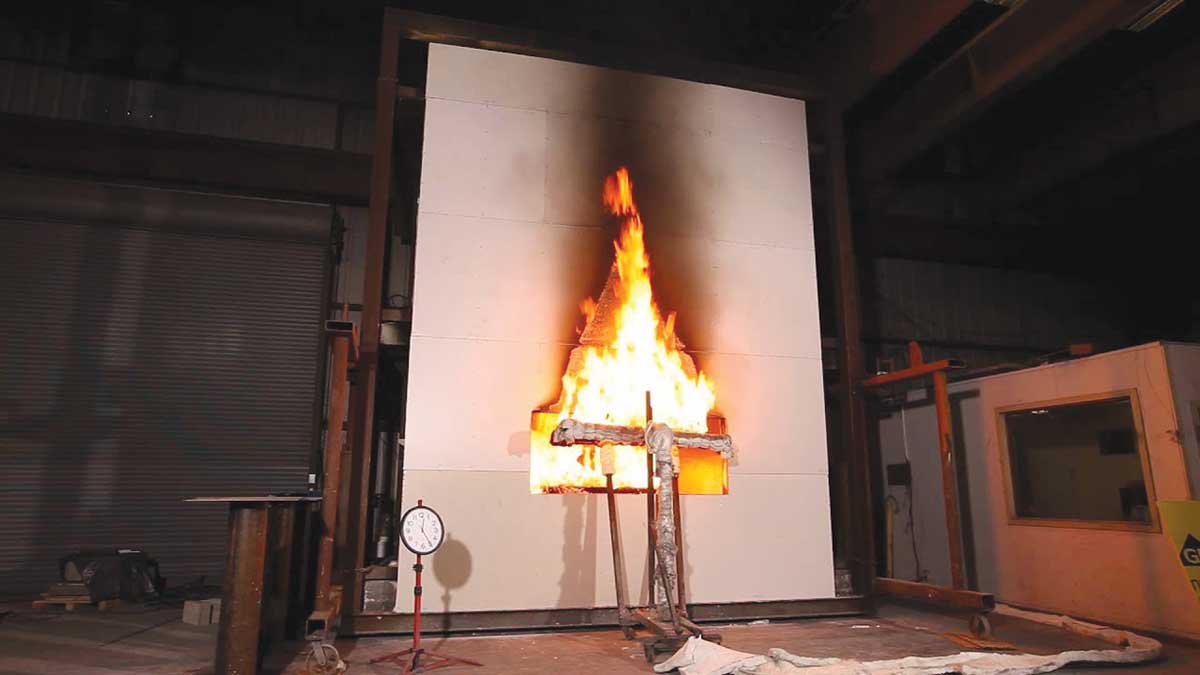
Fire safety of a building façade hinges on the material used for the façade and the fixing structure integrity during fire; however, almost 99% of the time we select a façade material by looking at the samples and its technical datasheet; but we fail to analyze the whole assembly and how it will perform during a fire emergency
Façade Consultant Ar. Harish Gupta, Habitat n Skins
Most façade products sold in the market are shown as having fireproof or fire-retardant properties. However, such characteristics are not apparent unless they are subjected to a forensic analysis; in fact, the entire assembly has to be tested in a fire test laboratory. In a typical NFPA 285 test, the assembly of the façade material with its structure is installed on a rig and an opening is created to simulate a window. The fire is then started inside the closed chamber and near the window in the rig and the fire escapes from the opening, thereby setting the façade assembly on fire. The observations of how the façade material and its supporting structure deteriorates over a designated time will determine how the façade material and its assembly will qualify as a fire proof / fire-resistant material for a certain span of time.
However, the real story in practice is different. Even if a façade material is tested with fire resistant support frame structure, most companies are happy to sell the products without the fire tested frame structure. The client or contractor will use the material with their own specifications of the sub-frames which have not been tested. The result is that the material will fail during fire due to the poor sub-frame structure or non-compliant base structure that could not withstand the heat, even if a fire-proof or fire-resistant material is installed.
Relying on a façade material’s test certificates for fire resistance is not proof enough; we need to do a forensic analysis of what can go wrong for the entire façade, including other materials and assemblies, in case of fireThis email address is being protected from spambots. You need JavaScript enabled to view it.
Another scenario in the façade business is piggyback riding other products. In such a case, a superior product that may be well tested has to deal with competitive products under the same generic name, which may not be reliably tested. Clients are advised to ignore generic names as proof of a material being fire-compliant and take a closer look at the test certificates of the material, which must be from a reputed fire test laboratory. Unfortunately, the test certificates in most competitive products turn out to be either fabricated or lacking in clarity and adequacy of the extent of fire testing to be done.
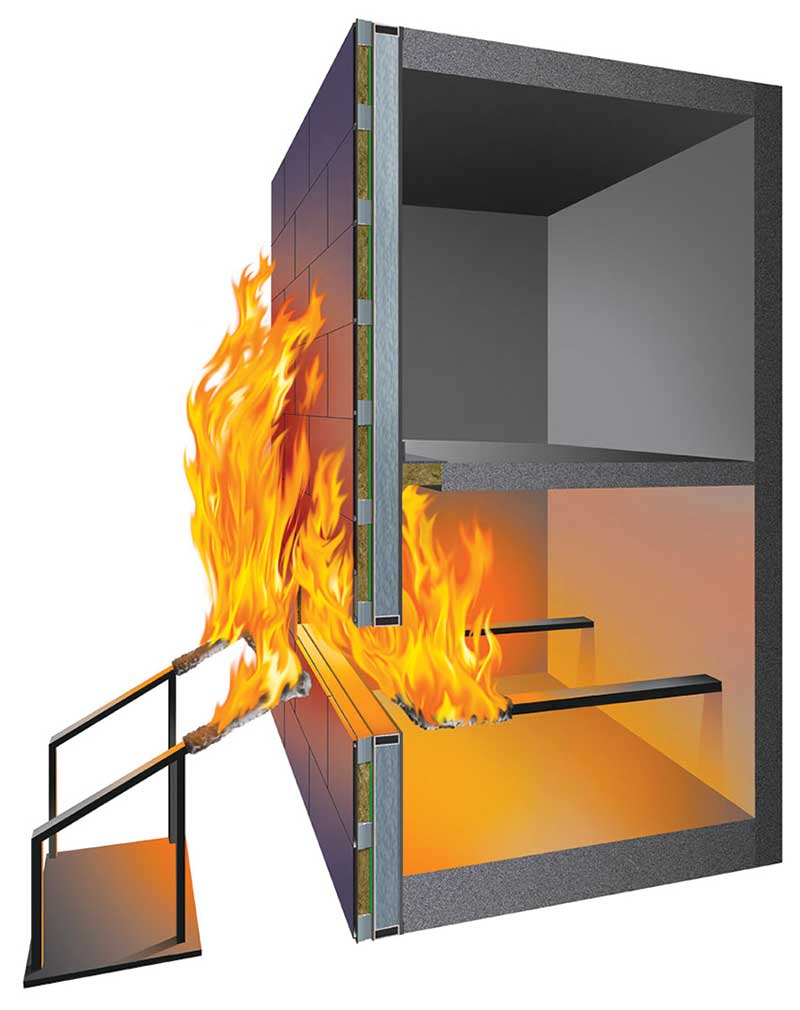
For every project, a criterion must be set for the fire resistance of the exterior façade and the temperature resistance for that duration as required by relevant codes. These two are the most important factors for determining the safety of the building. Intense fires can test even the most fire-resistant or fireproof assemblies. The fire intensity is primarily decided by the type of use a building is put to. For example, if a façade material is put on a multilevel warehouse storing high calorific value materials or higher fire load content and the same facade material is put on a normal office building, then it is highly likely that in the event of a fire, the material may resist fire in the office building but fail in the warehouse due to the higher intensity of the fire. So, it is very important to predict the intensity of a fire in consultation with a facade expert and then select the appropriate material.
There are many materials in the market that claim to be fire resistant with a rider that even though the material is flammable it will extinguish if the source of fire is removed. Particular attention is needed for such materials. They do not clear the relevant fire tests which one may assume, but they clear specific fire tests that state that the material is self extinguishing when the fire source is removed. Such materials mostly emit high levels of toxic fumes and deplete oxygen rapidly, thereby becoming a smoke hazard during fire. Most deaths are caused by smoke during a fire, so one must be careful when opting for such products.
One must understand the smoke emissivity of the product when burnt, which is clearly defined in the test certificates as ‘S’ (smoke emissivity with sub-classification). The other problem is that such products are made from 90% organic matter and petrochemical byproducts. They will burn rapidly during fire as long as the fire source exists; however, they will form a bridge of fire for other flammable material that is separated from the main source of fire. So, even if the material self extinguishes in due course, it has helped propagate the fire to a neighboring material!
There is no size that fits all. Every building use will have a different façade material and assembly that will be suitable for it. Preempting a fire not just in isolation of a particular material but the whole building itself will open up many questions to be answered before the building can be designated as safe.


